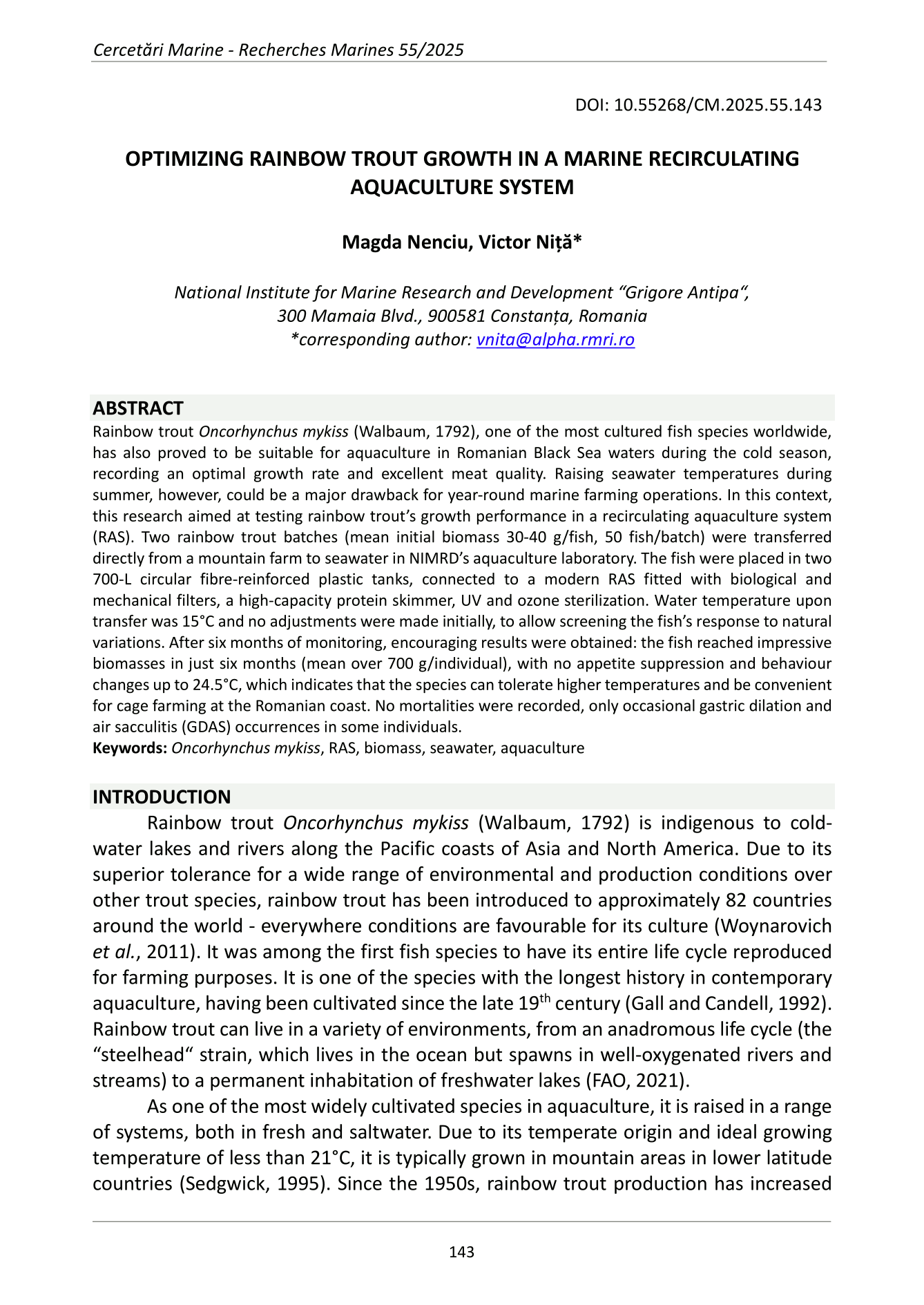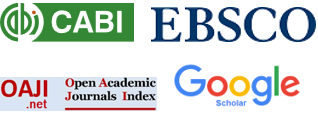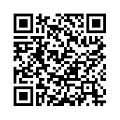OPTIMIZING RAINBOW TROUT GROWTH IN A MARINE RECIRCULATING AQUACULTURE SYSTEM
DOI:
https://doi.org/10.55268/CM.2025.55.143Keywords:
Oncorhynchus mykiss, RAS, biomass, seawater, aquacultureAbstract
Rainbow trout Oncorhynchus mykiss (Walbaum, 1792), one of the most cultured fish species worldwide,
has also proved to be suitable for aquaculture in Romanian Black Sea waters during the cold season,
recording an optimal growth rate and excellent meat quality. Raising seawater temperatures during
summer, however, could be a major drawback for year-round marine farming operations. In this context,
this research aimed at testing rainbow trout’s growth performance in a recirculating aquaculture system
(RAS). Two rainbow trout batches (mean initial biomass 30-40 g/fish, 50 fish/batch) were transferred
directly from a mountain farm to seawater in NIMRD’s aquaculture laboratory. The fish were placed in two
700-L circular fibre-reinforced plastic tanks, connected to a modern RAS fitted with biological and
mechanical filters, a high-capacity protein skimmer, UV and ozone sterilization. Water temperature upon
transfer was 15°C and no adjustments were made initially, to allow screening the fish’s response to natural
variations. After six months of monitoring, encouraging results were obtained: the fish reached impressive
biomasses in just six months (mean over 700 g/individual), with no appetite suppression and behaviour
changes up to 24.5°C, which indicates that the species can tolerate higher temperatures and be convenient
for cage farming at the Romanian coast. No mortalities were recorded, only occasional gastric dilation and
air sacculitis (GDAS) occurrences in some individuals.

Downloads
Published
How to Cite
Issue
Section
License

This work is licensed under a Creative Commons Attribution-NonCommercial-NoDerivatives 4.0 International License.
This is an open access journal, which means that all content is freely available without charge to the user or his/her institution. Users are allowed to read, download, copy, distribute, print, search, or link to the full texts of the articles, or use them for any other lawful purpose, without asking prior permission from the publisher or the author. This is in accordance with the BOAI definition of open access.






